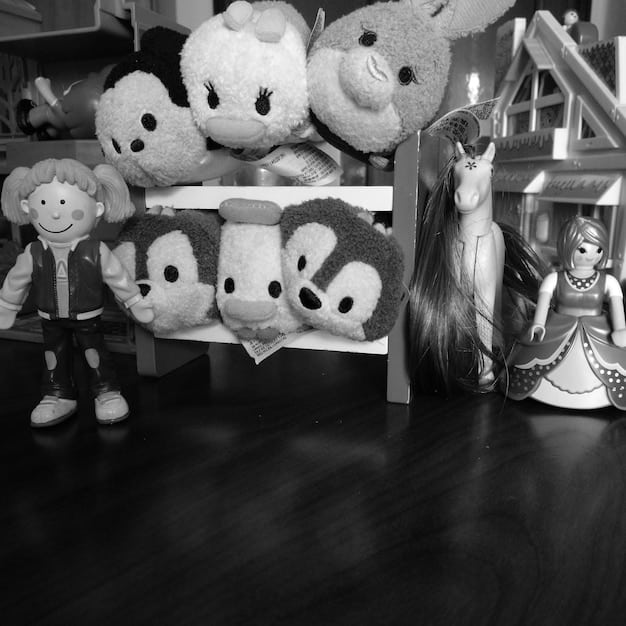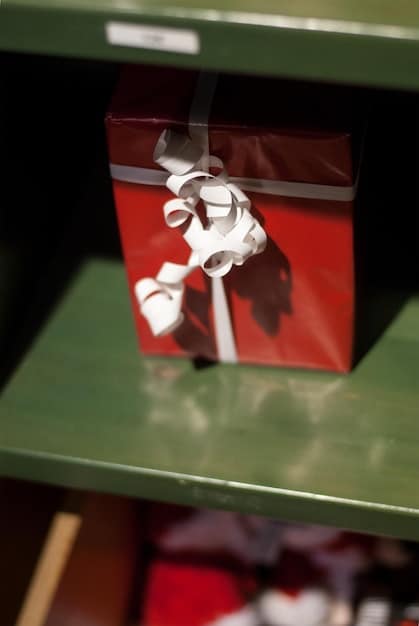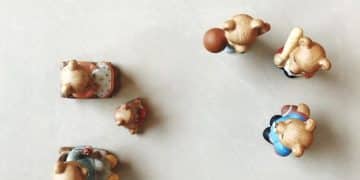Insider’s Guide: Spotting Fake Anime Merch & Saving 30%

Spotting fake anime merchandise online can be tricky, but with this insider’s guide, you’ll learn how to identify authentic products, avoid scams, and potentially save up to 30% on your favorite collectibles.
Are you an anime enthusiast looking to expand your collection? The allure of officially licensed anime merchandise is undeniable, but the online marketplace is rife with counterfeit products. This insider’s guide: How to spot fake anime merchandise online and save 30% will equip you with the knowledge you need to discern genuine items from fraudulent ones, ensuring you get the real deal and save money in the process.
The Growing Problem of Fake Anime Merchandise
The anime industry is booming, and unfortunately, so is the market for counterfeit merchandise. As demand for figures, plushies, and other anime-related goods rises, so does the incentive for less scrupulous sellers to flood the market with fakes. Understanding the scope of this problem is the first step in protecting yourself.
Why is Fake Merchandise so Prevalent?
The popularity of anime creates a large and eager market, making it an attractive target for counterfeiters. These individuals often exploit the desire for rare or limited-edition items by producing cheap imitations, often at significantly lower prices.
- High Demand: The global popularity of anime drives a constant demand for merchandise.
- Lucrative Market: Counterfeiters can generate substantial profits by selling fake goods.
- Online Accessibility: The internet provides a platform for easily distributing and selling counterfeit items.
The consequences of purchasing fake anime merchandise extend beyond simply receiving a low-quality product. These transactions can also support unethical business practices and even organized crime.
Red Flags: Identifying Suspicious Listings
Before you hit that “buy” button, carefully examine the product listing. Several red flags can indicate that the merchandise is not authentic. Paying close attention to these details can save you from disappointment and financial loss.

Price That’s Too Good to Be True
One of the most obvious indicators of fake merchandise is a price that seems significantly lower than the average market value. Counterfeiters often lure in buyers with unusually cheap offers.
Poor Quality Images or Lack Thereof
Genuine sellers typically provide high-quality images showcasing the product from multiple angles. Suspicious listings may feature blurry, low-resolution images, or even stolen images from other websites.
- Blurry or Low-Resolution Images: A sign that the seller is trying to hide imperfections.
- Stolen Images: Reverse image search can help identify if the images are taken from legitimate sources.
- Limited Angles: Lack of multiple views suggests the seller may be hiding flaws.
Be wary of listings with vague descriptions or those that use generic terms without providing specific details about the product’s manufacturer, materials, or dimensions.
Analyzing Seller Reputation and Reviews
In the online marketplace, the seller’s reputation is paramount. Before making a purchase, take the time to thoroughly research the seller’s history, read reviews, and check for any signs of suspicious activity. A reputable seller will have a proven track record of providing authentic merchandise and excellent customer service.
Checking Seller Ratings and Feedback
Look for sellers with high ratings and positive feedback from previous buyers. Pay close attention to reviews that mention the authenticity of the products.
- High Positive Ratings: Indicates a reliable and trustworthy seller.
- Authenticity Mentions: Positive reviews specifically mentioning the genuineness of the merchandise are a good sign.
- Negative Feedback: Be wary of sellers with a significant number of negative reviews, especially those related to product quality or authenticity.
A trustworthy seller will be transparent about their business practices and readily provide information about their sources and authentication processes.
Examining Product Details: Packaging, Materials, and Markings
Authentic anime merchandise is typically manufactured to high standards, with careful attention to detail. Examining the product’s packaging, materials, and markings can provide valuable clues about its authenticity. Counterfeiters often cut corners in these areas, resulting in noticeable flaws.
Packaging and Official Licensing
Genuine anime merchandise often comes in professionally designed packaging with official licensing logos and trademarks. Check for the presence of these markings and verify their accuracy.
Material Quality and Craftsmanship
Authentic figures and plushies are usually made from high-quality materials with meticulous craftsmanship. Look for clean lines, precise details, and durable construction.

- Poor Stitching: Indicates a poorly made imitation.
- Inconsistent Paint: Unprofessional paint applications are often a sign.
- Cheap Materials: Counterfeiters use low-cost alternatives, causing quality issues.
Pay attention to details such as the texture of the fabric, the sharpness of the paint, and the overall feel of the product. Compare these characteristics to images of authentic merchandise to identify any discrepancies.
Securing Your Purchase and Payment Methods
Even after carefully vetting the product listing and seller, it’s essential to take precautions to secure your purchase and protect your financial information. Choosing secure payment methods and understanding the terms and conditions of the sale can reduce the risk of fraud or scams.
Secure Payment Options
Opt for payment methods that offer buyer protection, such as credit cards or PayPal. These platforms typically have dispute resolution processes that can help you recover your funds if you receive a counterfeit product.
- Avoid Unsecured Methods: Never use money transfers or direct bank transfers for online purchases from unfamiliar sellers.
- Check for SSL Encryption: Ensure the website uses SSL encryption (indicated by “https” in the URL) to protect your payment information.
- Review Return Policies: Make sure the seller has a clear and fair return policy in case you are not satisfied with your purchase.
Protect yourself by keeping records of all your transactions and communications with the seller. In the event of a dispute, these records will be valuable in supporting your claim.
Reporting Counterfeit Merchandise and Protecting Others
If you encounter or suspect the sale of counterfeit anime merchandise, take action to report it to the appropriate authorities. By reporting these activities, you can help protect other consumers and support the fight against intellectual property theft.
How to Report Fake Merchandise
Report suspected counterfeit listings to the online marketplace where they are being sold. Most platforms have mechanisms for reporting violations of their policies.
- Provide Detailed Information: Include as much information as possible about the listing, seller, and suspected violations.
- Contact Rights Holders: Notify the copyright holders or trademark owners of the counterfeit merchandise.
- Report to Government Agencies: In some cases, you may also want to report the issue to government agencies responsible for intellectual property protection.
By taking an active role in combating the sale of counterfeit merchandise, you can help ensure that the anime community continues to enjoy authentic and high-quality products.
| Key Point | Brief Description |
|---|---|
| 🚩 Red Flags | Watch for unrealistically low prices and poor-quality images. |
| ✔️ Seller Reputation | Check ratings, reviews, and feedback about authenticity. |
| 📦 Product Details | Inspect packaging, materials, and official licensing markings. |
| 🔒 Secure Payment | Use secure payment methods with buyer protection. |
FAQ
▼
Common fakes include figures, plushies, keychains, and clothing. Limited-edition items are especially prone to counterfeiting due to their higher value and demand.
▼
Check the packaging for official licensing logos, examine the figure for quality details and precise paint application, and compare it to images of authentic figures.
▼
Contact the seller to request a refund or exchange. If the seller is uncooperative, file a dispute with your payment provider and report the listing to the online marketplace.
▼
Yes, many reputable online retailers and official distributors specialize in authentic anime merchandise. Research and choose established sellers with positive reputations.
▼
Follow reputable anime news websites, online communities, and social media accounts. These sources often provide updates on new merchandise and warnings about counterfeit trends.
Conclusion
Navigating the world of anime merchandise requires vigilance and knowledge. By following this insider’s guide, you can confidently identify authentic products, avoid scams, and build a collection you’re proud of. Happy collecting!





